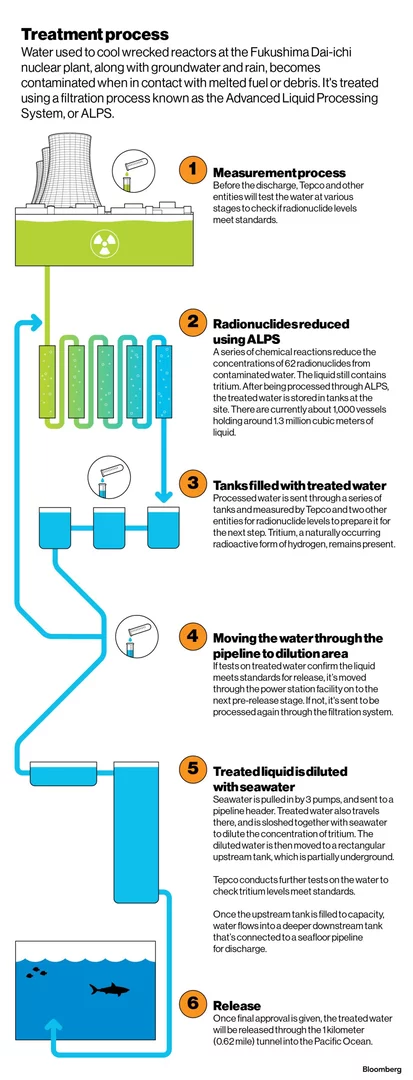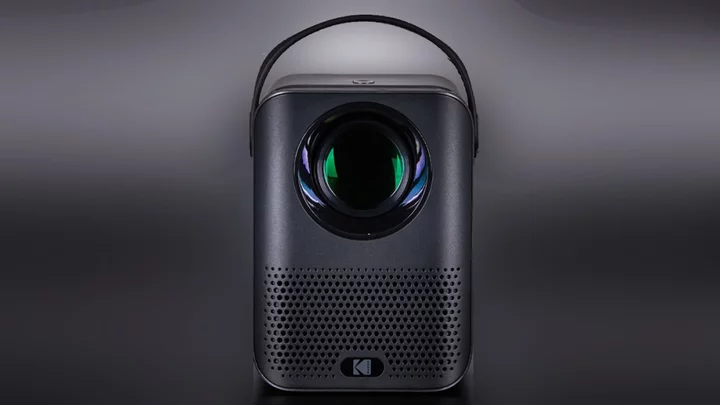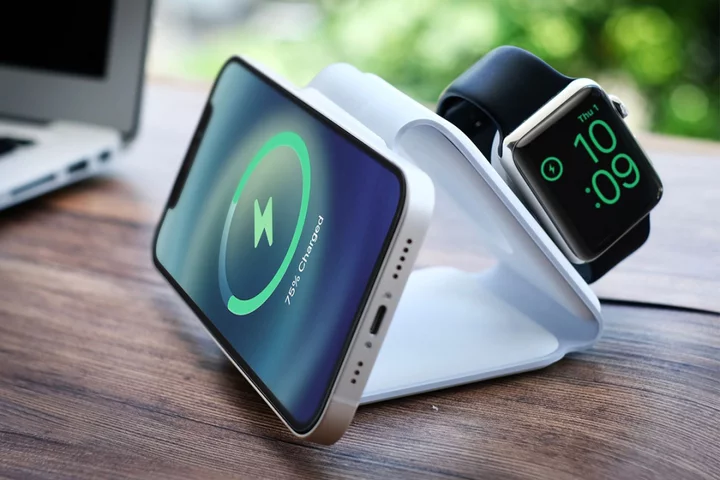Japan started the release of treated wastewater from the Fukushima nuclear site into the Pacific Ocean in a process that could last about 30 years, triggering an immediate retaliation by China to curb seafood imports.
Tokyo Electric Power Co., which operates the wrecked power plant, confirmed its first discharge began as scheduled at about 1 p.m. local time Thursday. Within hours, China — the top buyer of Japan’s seafood — confirmed it would suspend imports of all aquatic products under steps to protect food safety.
Read More: How Japan Will Release Its Nuclear Wastewater Into the Pacific
“We have made serious démarches to Japan and asked it to stop this wrongdoing,” China’s foreign ministry said in a statement. Hong Kong, another major importer, has also imposed curbs on Japanese food imports.
Though Japan’s process has been authorized as safe by the International Atomic Energy Agency, China and other opponents have questioned the accuracy of testing systems and insist the release of wastewater from a disaster site isn’t comparable with similar activities that are commonplace in the global nuclear sector.
Tepco’s first discharge involves the release of about 7,800 cubic meters of treated water and will take about 17 days to complete, according to a document posted on the company’s website. The water will contain 1.1 trillion becquerels — a measure of radioactivity — of tritium, part of Tepco’s strategy to begin the process with relatively low concentrations of the radionuclide.
The company has a target to discharge less than 22 trillion becquerels of tritium a year, and expects to release 5 trillion becquerels as it carries out a total of four releases of treated water by the end of March.
China will step up radiation monitoring in its sea areas and watch for any impact from the Fukushima wastewater releases, the Ministry of Ecology and Environment said Thursday in a statement posted on its social media account. Tepco was also sampling seawater following the release, the company said.
A two-year IAEA review found Japan’s strategy would have a negligible impact on people and the environment. China is “an important trading partner for Japan” and Tepco will continue to explain the safety of its procedure, the company’s president Tomoaki Kobayakawa told reporters.
Read More: Fukushima Has a Lesson for Nuclear Renaissance: David Fickling
Safety concerns from some nations are unfounded, according to Nigel Marks, an expert on radioactive waste and an associate professor at Curtin University in Perth. Eating a lifetime’s worth of seafood from near the release site would have “the tritium radiation equivalent of one bite of a banana,” he said.
Tepco needs to release a total of about 1.3 million cubic meters of wastewater — equivalent in volume to about 500 Olympic-size swimming pools — as a fleet of about 1,000 storage tanks are hitting capacity. The waste has been generated in part as the utility works to cool wrecked reactors following the 2011 meltdown that ranks as the world’s worst atomic accident since Chernobyl.
Land currently housing the storage tanks also needs to be cleared to construct other facilities necessary to complete the decades-long decommissioning of the site.
--With assistance from Philip Glamann.
(Updates with details of China suspending aquatic product imports)









